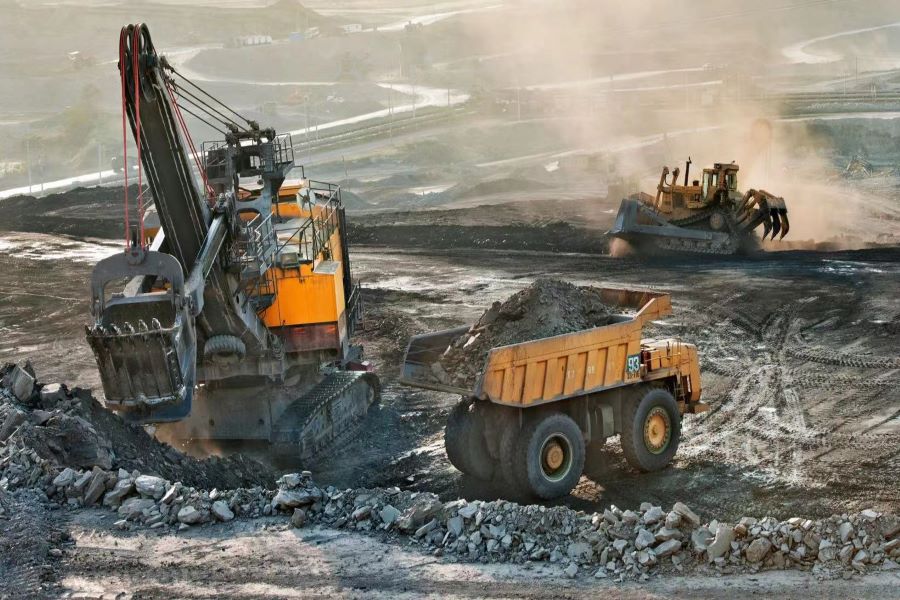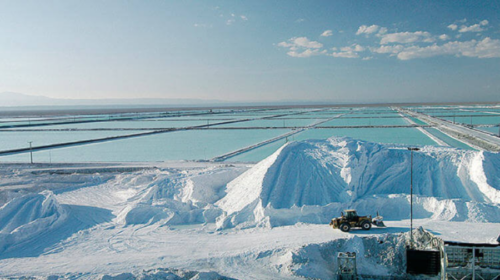Cash-Rich Ganfeng Lithium Sees Tasty Diversification in Smaller Rare Metals Producer

Miner of the metal used in electric car batteries will buy 16.7% of tantalum and niobium producer Ximei Resources for $31 million
Key Takeaways:
- Ganfeng Lithium will pay HK$240 million for 16.7% of Ximei Resources, a producer of tantalum and niobium.
- Purchase will diversify Genfeng’s business, and make use of its fat profits built on skyrocketing lithium prices
By Andrew Curran
Half a decade ago, barely anyone knew what lithium was. Now, the once-exotic metal is enjoying flavor-of-the-month status with a sky-high price to match. The soft, white silvery metal has seen its price soar over 400% in just 12 months as makers of batteries used in electric vehicles and new energy power stations scramble for limited supplies. As they enjoy record revenues and are nicely cashed-up, leading lithium producers are busy eyeing M&A to boost their supplies and diversify.
Reaping such benefits, including a blockbuster fourfold profit rise last year, Ganfeng Lithium Co. Ltd. (1772.HK) has money to spend. The company said last week it will splash out a relatively modest HK$240 million ($31 million) for 16.7% of Ximei Resources Holding (9936.HK), a producer of two other exotic metals, tantalum and niobium. Ganfeng says the deal will have a “potential synergistic effect” on its existing resource projects, contribute investment income, provide a new source of profits and improve Ganfeng’s core competitiveness.
Ganfeng said that while the deal will generate cash outflow, it won’t impact the company’s everyday working capital. It added that future financial payoffs make the acquisition risks worthwhile. The deal will see Ganfeng buy 60 million new Ximei shares for HK$4 apiece.
Ximei’s share price spiked by over 17% on the news on early Friday last week before settling later in the day and finishing up more than 5%. Ganfeng shareholders were less impressed, with the company’s price struggling to record a 1% rise over the day.
Ximei is fully onboard, with its directors saying the deal represents an opportunity to raise capital and broaden its shareholder base. The company is far smaller than Ganfeng, which probably explains Ximei’s eagerness to raise more cash and bring in such a big partner flush not only with money but also other resources and experience. Ximei is currently worth about $180 million, a tiny fraction of Ganfeng’s $24.5 billion market cap.
“The proposed subscription is expected to enhance the group’s development in its tantalum and niobium business and enhance the group’s overall competitiveness,” Ximei’s said in its own announcement last week.
Notably, Ganfeng is buying the shares at a 9.7% discount to Ximei’s last closing price before announcement of the deal. However, Ximei said that the price was arrived at after arm’s-length negotiations, and considers factors such as the macroeconomic environment, the industry outlook and the company’s own future prospects.
Ximei could certainly use the cash from the deal, as its own cash and cash equivalents totaled just 170 million yuan ($25 million) at the end of last year, down from 186 million yuan a year earlier, according to its latest annual report. That means the new infusion from Ganfeng will more than double its cash pile.
Tasty minnow
Ximei is one of the world’s major tantalum and niobium producers. Both are relatively rare metals and, while different, are always found together. Around 75% of global niobium output goes into producing high-strength steel alloys used in pipelines, transportation infrastructure, and structural applications. Tantalum is used in electronic capacitors in mobile phones, computer hard drives, and pacemakers.
While Ximei is a minnow compared to Ganfeng, it’s potentially a tasty minnow. And as we’ve previously said, Ganfeng has plenty of cash to spend to diversify its portfolio. Bolstered by soaring lithium prices, the company generated revenues of over 11 billion yuan in 2021 – double the level from 2020. Its net profit last year grew by an even bigger 410% to 5.41 billion yuan.
Based in central China’s Jiangxi province, Ganfeng has three key business units: the manufacture and sale of lithium products; the manufacture and sale of lithium batteries; and the exploration and sale of lithium ore. Last year, over 81% of its revenues came from the manufacture and sale of lithium products and related processing services. Over 78% of Ganfeng’s customers are located within mainland China.
The rapid development of new energy vehicles and energy storage systems have sharply boosted demand for powerful batteries that count lithium and lithium compounds as key components.
“The industry has gradually shifted from a balanced supply and demand to a tight supply situation,” Ganfeng said in its 2021 financial report released two months ago. “The company, capitalizing on its first-mover advantages, continues to enhance its competitiveness and further cements and improves its industrial position.”
Lithium prices are off their February 2022 high but still trading at around 457,000 yuan per ton. That level is more than four times a year ago, when the price never threatened to break the 100,000 yuan per ton level.
Ganfeng’s production rate across all of its facilities is 28,000 tons annually of lithium carbonate, 70,000 tons of lithium hydroxide, and 2,150 tons of lithium metal. On this basis, you might say Ganfeng is in a pretty sweet spot right now. After all, the company has the most comprehensive lithium industry value chain in the world, covering the extraction, processing, production, and recycling of lithium and lithium compounds.
But investors are a demanding bunch. The company was trading at over HK$100 per share early this week, up from its 52-week low of about HK$86 earlier this month but still way down from the 52-week high of HK$170 reached last August. Ganfeng isn’t alone in that regard, as lithium stock prices have dropped across the board this year. That’s because a lot of lithium gets sold in advance at prices negotiated at the time, which don’t necessarily reflect current prices. Further, macro events and market sentiment, fueled by the Russia-Ukraine war, is driving down stock prices generally.
Ganfeng trades at a trailing price to earnings (P/E) ratio of about 14, which looks like a relative bargain. By comparison, local competitor Tianqi Lithium (002466.SZ) trades at a higher trailing P/E ratio of 24. Offshore, the trailing P/E ratios for international rivals Pilbara Minerals (PLS.AX) and Albemarle (ALB.US) are even higher at about 100 each – perhaps reflecting the importance different parts of the world put on lithium and the value placed on producers.
Ganfeng’s prospective stake in Ximei represents a step outside its core business area. But the market for other rare metals is running hot and, given the paucity of supply and strong worldwide demand, shows no signs of abating. For Ganfeng, the acquisition has the dual effect of diversifying its business operations into another highly lucrative arena, and spending some of the revenue and profits that rocketing lithium prices are generating.
To subscribe to Bamboo Works free weekly newsletter, click here





